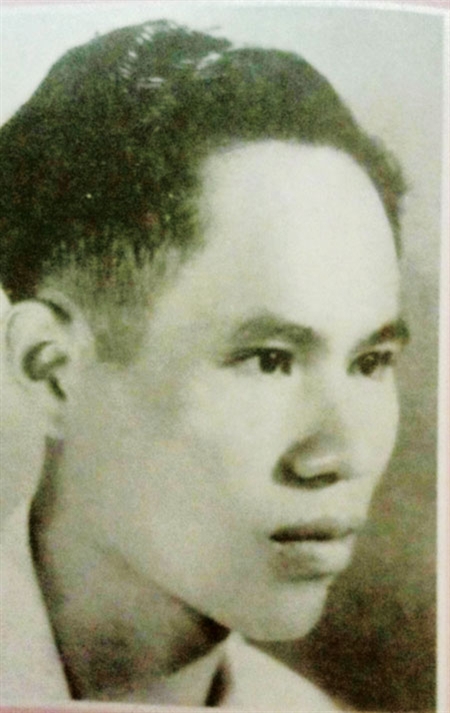
Seventy years have passed, but the fond memories of Capital Liberation Day (October 10, 1954) still linger in the minds of historical witnesses like Nguyen Dinh Tan, 88, who actively participated in the student movement during the resistance war against the French and had the honor of greeting the army as it entered Hanoi.
Memories of an indomitable brother
Nguyen Dinh Tan was born in 1936 into a family of three siblings, all of whom fought in the resistance war. He said the person who had the greatest influence on him was his eldest brother - the fallen Nguyen Sy Van.
Sitting in the small house on Hang Bai Street in Hoan Kiem District, Tan recounted how his family fled the war in December 1946 as memories of his brother slowly returned. The family moved back to the city in late 1947. He recalled that in the early months of 1948, his brother Van finished his final year at Chu Van An School.
At the time, Tan was still studying at Nguyen Trai Secondary School, unaware that his brother had joined the student movement against the French.
In September 1947, the Hanoi Party Committee was re-established, and the Party organization, government, and armed forces were consolidated from the city to the grassroots. The city center was occupied by the French and the suburbs were divided into three districts, 4, 5, 6, according to the resistance forces. The group of Nguyen Sy Van, Nguyen Van Kham, and Nguyen Trong Quang soon became the base of District 6 police, with Hong Ha as the district chief.
In 1948, the Chu Van An School youth resistance group slipped away from enemy surveillance at the Hang Trong police station on Hoan Kiem Lake and swam to the Turtle Tower in the middle of the lake to raise the national flag in honor of President Ho Chi Minh's birthday on May 16.
| Martyr Nguyen Sy Van. Photo courtesy of his family |
On the night of May 18, Kham stood guard while Van and Quang swam to the Turtle Tower to carry out their mission. The next morning, the enemy at both the Hang Trong Police Station and the City Hall (now the Hanoi People's Committee) found the flag raised in the heart of Hanoi and immediately took it down, but it was too late as word spread that the Viet Minh (Vietnamese soldiers) were able to raise the flag at the Turtle Tower.
"This action caused a great stir. The red flag with a yellow star was fluttering in the middle of Hoan Kiem Lake, which made the people excited and rallied their support for the resistance government and President Ho Chi Minh," Tan said.
No one in the family knew of Van's actions until May 25, 1948, when agents of the General Department II (the French Overseas Defense Intelligence Agency) came to his house and arrested him.
Van and Kham were first taken to the Cua Dong Stone Cellar for interrogation, where they were brutally tortured. They were then taken to Hoa Lo Prison, convicted, and sentenced to hard labor in Tien Yen District, the northern province of Quang Ninh. The family has since lost contact with them.
Only later did Tan learn that his brother had escaped from prison but was recaptured by the enemy in 1948 and tortured to death in Khe Tu Prison, Tien Yen.
Following his brother's example, Tan became an active member of the student movement in the capital. He and his friends at Chu Van An High School staged performances, distributed leaflets, propagandized, and went on strike in support of the revolution and to protest the conscription of students into the army.
Rejoicing on Victory Day
In 1954, 18-year-old Nguyen Dinh Tan was among the crowds celebrating victory on October 10.
A few days before, the capital was buzzing with army corps that gradually entered the city and occupied important places such as Hang Co Station, the Governor's Palace, the Water Station area, Sword Lake, and others.
| Nguyen Dinh Tan recalled his brother's memory at the Hoa Lo prison relic. Photo: Ngo Minh/The Hanoi Times |
"On Hue and Hang Bai streets, many people were ecstatic as they greeted the troops with flags. The troops told the people to put the flags away because it wasn't time yet. My friends and I had been actively making banners and slogans to welcome the army marching into the city," Tan recalled.
By 4 p.m. on October 9, the last units of French soldiers left the city over the Long Bien Bridge, and the Vietnamese army and people were in complete control of Hanoi. On October 10, the Capital Regiment led by the 308th Regiment entered the capital.
The city seemed to burst at that moment. There were welcoming gates, banners, and flags hanging from the streets. Everyone dressed up to celebrate the return of the victorious army. Tan said, "The joy of liberation was felt throughout Hanoi."
Seeing the victory flag of the fatherland fluttering on the top of the Flag Tower, Tan was filled with joy and tears fell as he thought of his brother who had defied all odds to plant the flag on the Turtle Tower that day.
He always thought that every person must know how to cherish the value of peace, independence and freedom, and live so as not to disappoint those who have fallen.
With this determination, Tan passed the entrance exam to the Chemistry Department of the Vietnam National University. After graduation, he worked at the State Science Committee under the Government Council until his retirement.






- Hanoi's old man: Indelible memories of Capital Liberation Day
- Remembering the days of Hanoi's liberation through archives
- Portrayal of the historic Long Bien Bridge in photo books and paintings
- Meeting with Hanoi's historical witnesses
- Colorful streets of Hanoi on Vietnamese Independence Day
- Hanoi's first power plant and city modernization


